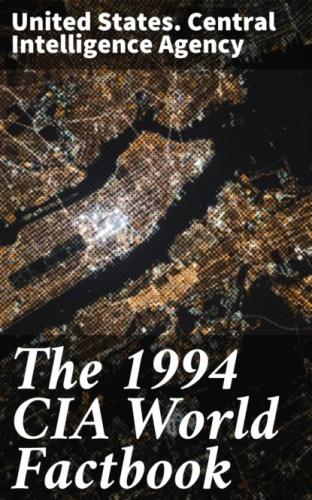12% (1991)
Budget:
revenues:
$97 million (includes $43,000,000 in local revenue and $54,000,000 in
grant revenue);
expenditures:
$NA, including capital expenditures of $NA (FY91)
Exports:
$306 million (f.o.b., 1989)
commodities:
canned tuna 93%
partners:
US 99.6%
Imports:
$360.3 million (c.i.f., 1989)
commodities:
materials for canneries 56%, food 8%, petroleum products 7%, machinery
and parts 6%
partners:
US 62%, Japan 9%, NZ 7%, Australia 11%, Fiji 4%, other 7%
External debt:
$NA
Industrial production:
growth rate NA%
Electricity:
capacity:
42,000 kW
production:
100 million kWh
consumption per capita:
2,020 kWh (1990)
Industries:
tuna canneries (largely dependent on foreign fishing vessels), meat
canning, handicrafts
Agriculture:
bananas, coconuts, vegetables, taro, breadfruit, yams, copra,
pineapples, papayas, dairy farming
Economic aid:
recipient:
$21,042,650 in operational funds and $1,227,000 in construction funds
for capital improvement projects from the US Department of Interior
(1991)
Currency:
1 United States dollar = 100 cents
Exchange rates:
US currency is used
Fiscal year:
1 October - 30 September
@American Samoa, Communications
Railroads:
none
Highways:
total:
350 km
paved:
150 km
unpaved:
200 km
Ports:
Pago Pago, Ta'u, Ofu, Auasi, Aanu'u (new construction), Faleosao
Airports:
total:
4
usable:
4
with permanent-surface runways:
2
with runways over 3,659 m:
0
with runways 2,440 to 3,659 m:
1 (international airport at Tafuna)
with runways 1,200 to 2,439 m:
0
note:
small airstrips on Fituita and Ofu
Telecommunications:
8,399 telephones; broadcast stations - 1 AM, 1 FM, 1 TV; good telex,
telegraph, and facsimile services; 1 Pacific Ocean INTELSAT earth
station, 1 COMSAT earth station
@American Samoa, Defense Forces
Note: defense is the responsibility of the US
@Andorra, Geography
Location: Southwestern Europe, between France and Spain Map references: Europe, Standard Time Zones of the World Area: total area: 450 sq km land area: 450 sq km comparative area: slightly more than 2.5 times the size of Washington, DC Land boundaries: total 125 km, France 60 km, Spain 65 km Coastline: 0 km (landlocked) Maritime claims: none; landlocked International disputes: none Climate: temperate; snowy, cold winters and cool, dry summers Terrain: rugged mountains dissected by narrow valleys Natural resources: hydropower, mineral water, timber, iron ore, lead Land use: arable land: 2% permanent crops: 0% meadows and pastures: 56% forest and woodland: 22% other: 20% Irrigated land: NA sq km Environment: current issues: deforestation; overgrazing; soil erosion natural hazards: NA international agreements: NA Note: landlocked
@Andorra, People
Population: 63,930 (July 1994 est.) Population growth rate: 2.99% (1994 est.) Birth rate: 13.34 births/1,000 population (1994 est.) Death rate: 7.12 deaths/1,000 population (1994 est.) Net migration rate: 23.65 migrant(s)/1,000 population (1994 est.) Infant mortality rate: 7.9 deaths/1,000 live births (1994 est.) Life expectancy at birth: total population: 78.37 years male: 75.5 years female: 81.5 years (1994 est.) Total fertility rate: 1.73 children born/woman (1994 est.) Nationality: noun: Andorran(s) adjective: Andorran Ethnic divisions: Spanish 61%, Andorran 30%, French 6%, other 3% Religions: Roman Catholic (predominant) Languages: Catalan (official), French, Castilian Literacy: total population: NA% male: NA% female: NA% Labor force: NA
@Andorra, Government
Names:
conventional long form:
Principality of Andorra
conventional short form:
Andorra
local long form:
Principat d'Andorra
local short form:
Andorra
Digraph:
AN
Type:
parliamentary democracy (since March 1993) that retains as its heads
of state a co-principality; the two princes are the president of
France and Spanish bishop of Seo de Urgel, who are represented locally
by officials called veguers
Capital:
Andorra la Vella
Administrative divisions:
7 parishes (parroquies, singular - parroquia); Andorra, Canillo,
Encamp, La Massana, Les Escaldes, Ordino, Sant Julia de Loria
Independence:
1278
National holiday:
Mare de Deu de Meritxell, 8 September
Constitution:
Andorra's first written constitution was drafted in 1991; adopted 14
March 1993
Legal system:
based on French and Spanish civil codes; no judicial review of
legislative acts; has not accepted compulsory ICJ jurisdiction
Suffrage:
18 years of age, universal
Executive branch:
chiefs of state:
French Co-Prince Francois MITTERRAND (since 21 May 1981), represented
by Veguer de Franca Jean Pierre COURTOIS (since NA); Spanish Episcopal
Co-Prince Mgr.
